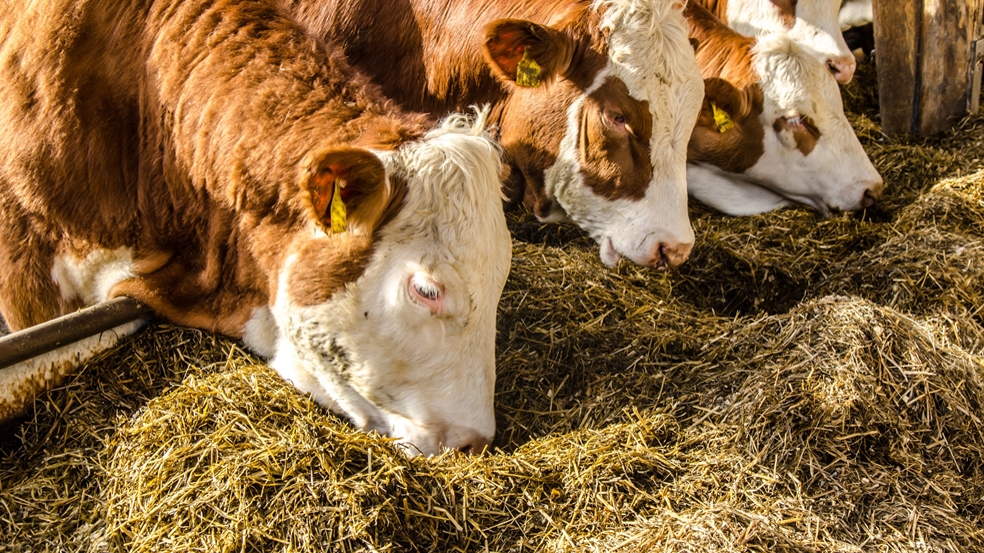3 things you could be doing to boost profits through cattle nutrition

With feed accounting for over 70% of the variable cost of beef production, efficient feeding can have a significant impact of profitability. Here are 3 tips compiled by our cattle experts.
Keep great records and update them often
Calculating DLWG against costs is an effective way of ensuring your animals are on a cost effective diet. Successful feed plans can be used as templates for future animals. The composition of feed can be tweaked and tested to find the optimum composition. Below average weight gain can be addressed before the consequences become too severe.
In order to do this effectively, you will need to keep accurate records. These records could be managed on a group basis. For the best results, however, detailed records should be kept on for individual animals. Not only will this enable the creation and optimisation of feed plans; but will also enable you to breed the best performing bulls and cows in the future. Regular weighing will allow farmers to identify animals who are not gaining weight at the desired speed – before this becomes visible to the eye. With problems identified before they become ‘problems’, feed plans can be adapted accordingly.
The NFU has highlighted technology as a significant opportunity for Livestock farmers to improve efficiency and profitability. Though it is possible to record individual animal records on paper, tracking these animals using software is by far the most time effective solution. The process can be further sped up by using handheld EID equipment and weigh heads which sync directly with software.
The best mix of nutrients, concentrates and minerals
It goes without saying that feed composition is vitally important. Feed plans should be tailored to growth stage and should be forward planned for the duration of an animal’s life. Home-grown forage and silage should be tested. Following testing, a feed plan can be developed which ensures the animal receives the appropriate nutritional value, resulting in the best growth rates. By knowing what nutritional value your animals are receiving through grazing and silage, you will be able to buy just enough concentrates; producing the best possible feed conversion ratio.
Feed plans are best visualised through a software solution – such as Farmplan’s Cattle Manager. Combined with regular weighing’s, cattle performance and feed plans can be linked; simplifying the process of working out and optimising feed conversion ratios. Wider business analysis is also possible, identifying the fields associated with greatest weight gains and helping to plan rotations and grazing plans.
There is also a clear link between nutrition and animal health; another area where software can contribute to the bottom line. TB testing, treatment records, medicines, stock and withdrawal periods can be simply and quickly managed – saving time and ensuring compliance. Individual animal records – containing both weight gain and medical records – can then be used to inform future breeding programmes.
Pay attention to grassland management
One way to maximise the profitability of your cattle is to make the best use of grazing. Long term feed plans mapped to the seasons will help avoid unnecessary expense. For example, creep feeding can be reduced if growth from grass can be achieved at a later date.
In order to make the best use of grazing, however, grasslands will need to be carefully managed. Depending on soil type, fields should be tested regularly – every 2 years in high rainfall areas. If fields are performing poorly reseeding can take place or fertiliser and slurry rates adapted. Slurry should also be tested; following testing, an agronomist will be able to advise you on your nitrogen and fertiliser requirements. Not only will this ensure you stay within legislation, but can also yield substantial cost savings.
The most effective way to manage grasslands is through a field management solution. In the past, software solutions for field management have been prohibitively expensive for cattle farmers. More recently, however, cost effective options have become available. If working with an agronomist, software can speed up the process of exchanging data and creating work plans. If farmers are managing grasslands without the input of an agronomist, then software can simplify the legislative requirements associated with fertiliser applications. This mitigates the risk of falling foul of legislation and ensures farmers get the most out of their grasslands.
